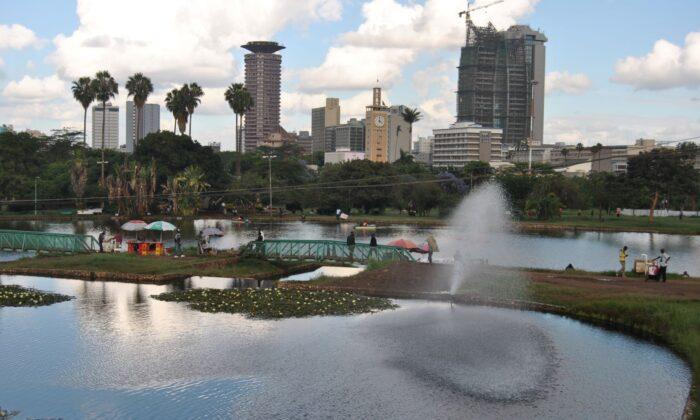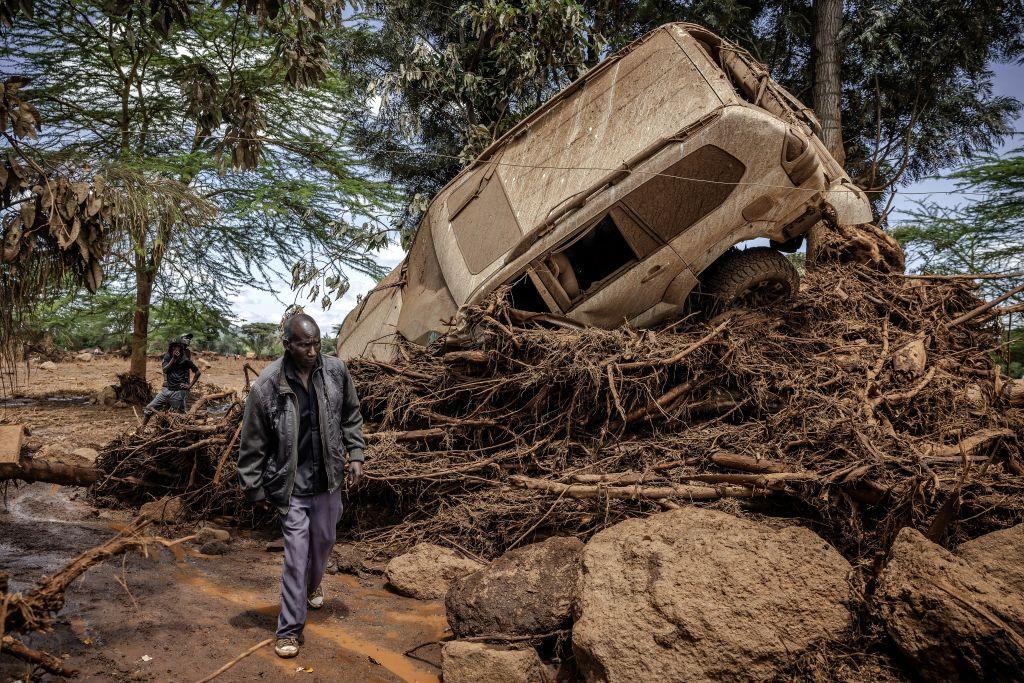NAIROBI, Kenya—The environmental footprint China is leaving in Africa through its projects, mainly the “One Belt, One Road” initiative, has sparked a heated debate on the continent in the past few years. The reason is that China is doing little to ensure that countries in which it has big projects are left with minimal environmental impact. In fact, they’re often left in far worse shape than when they were found.
Kenya’s President Uhuru Kenyatta recently gave the China Road and Bridge Corporation the go-ahead to construct an elevated 27-kilometer (17-mile) expressway linking downtown Nairobi to the Jomo Kenyatta International Airport. The aim was to ease traffic congestion and enable travelers catch their flights in a timely manner.
However, the expressway was earmarked to cut through Uhuru Park, a much-loved recreational park spanning 32 acres on the fringes of Nairobi’s Central Business District.
After protests and public outcry, the government revised its decision and rerouted the road, which is to be built in the next two to three years. If the project had gone ahead as planned, it would have cut 1.3 acres off the historic park.

The Chinese-built standard-gauge railway that runs through the Nairobi National Park is another case. In December 2016, the National Environmental Management Authority issued a license giving Kenya Railways permission to construct SGR Phase 2A, which passes through the middle of the park on an elevated bridge. The Nairobi National Park is the only one in the world that shares a fence with a city: Nairobi.
Funded by China, the $1.5 billion railway links Naivasha to Nairobi, where it links to another Chinese-funded $3.2 billion line between the Port of Mombasa and Nairobi. The section that runs through the park stretches for 7 kilometers (4 miles).
The railway has interfered with the natural habitat of the plants and animals in the park, and the ecological and environmental damage is irreversible, Kahindi Lekalhaile, chief operations director at the Africa Network for Animal Welfare, told The Epoch Times. In addition, there has been increased human–wildlife conflict since the construction of the railway.
“A country like Kenya cannot ignore China and must hold them responsible for the damage they cause,” otherwise there will be bigger problems down the road, Lekalhaile said.
“By allowing the Chinese to build the railway through the Nairobi National Park and also eventually through the Lake Nakuru National Park as it heads towards Kisumu is like saying that any person in power can influence an institutional organization, and the courts or civil society groups can do nothing about it apart from just talk and raise public awareness.”

Several other large projects funded or built by the Chinese across Africa have led to serious environmental degradation, while at the same time allowing Beijing to grow its influence in Africa, flexing its muscle through the projects.
The Merowe Dam in Sudan, which went into operation in 2009, is one of the world’s most destructive hydropower projects, according to the group International Rivers. The $2.4 billion dam was funded by China Export-Import Bank and Arab financiers, and built by largely by Chinese companies.
Although the project doubled Sudan’s electricity generation, it has had a major environmental impact, including the displacement of more than 50,000 residents of the fertile Nile Valley.
In 2006, midway through construction, the UN Environment Programme assessment documented damage, including silt loss for flood recession agriculture, dam sedimentation, riverbank erosion, reduced river valley groundwater recharge, blocking of fish migrations, and the impact on local endangered species such as the Nile crocodile.
A report by the South African Institute of International Affairs found that Chinese projects across Africa are often concentrated in sectors that are environmentally sensitive. These include oil and gas exploration, mining, hydropower, and timber extraction, and infrastructure projects such as roads, railway lines, and power transmission lines that attract environmentally sensitive investments.
“There are concerns over the environmental impact of Chinese investments, especially in mining, hydropower, roads, and smelters,” according to the Australian Centre on China in the World at Australian National University, in Zambia.
“Some local environmental NGOs accuse Chinese mining companies of serious pollution of air, water, and land; damaging wildlife habitat and displacing local communities without adequate compensation” wrote Beyongo Mukete Dynamic, a researcher at the center.
For years, Mozambique has battled a loss of forests to illegal logging, while the vast majority of that timber is imported by China, according to a 2014 report by the Environmental Investigation Agency.
“In some years, China recorded 99 percent of total globally recorded timber imports from Mozambique. Chinese demand is clearly responsible for nearly all timber exports from Mozambique, which is in turn now responsible for the majority of the 93 percent illegal logging rate currently blighting the country,” the report stated.
According to the U.S.-based Global Forest Watch, between 2001 and 2017, Mozambique lost 2.88 million hectares (7.1 million acres) of tree cover amid growing demand in China for valuable hardwoods such as rosewood.
Brian Waswala, an environmental science lecturer at Maasai Mara University and lead author of UN Environment’s Sixth Global Environmental Outlook for Youth, said that at least some of the blame lies with host nations that either lack stringent environmental legislation or have such laws but fail to enforce them.
“All countries are sovereign, and Chinese development partners cannot dictate environmental compliance terms," Waswala told The Epoch Times.
“There should also be interdisciplinary collaboration within the host countries’ government departments, and the public, too, need to play a part. Few citizens even know the provision of public participation in the development agenda. Most are oblivious of the law, and so any dubious developer, Chinese or not, would take advantage of this lapse.”





